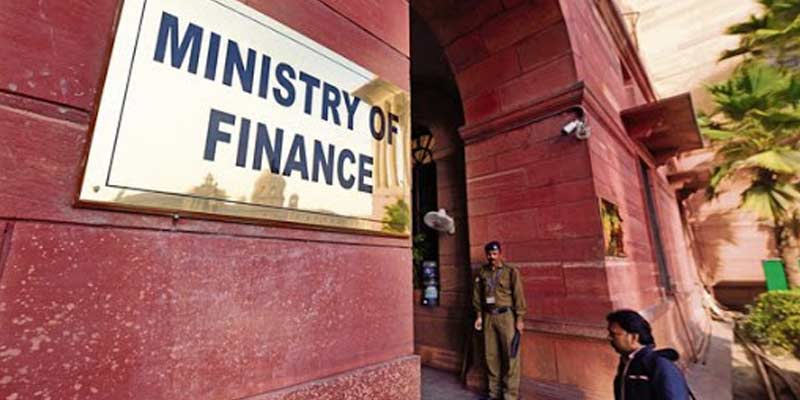- India
- Jul 08
Explainer / Departments under finance ministry
• The government has merged the department of public enterprises (DPE) with the finance ministry to give it better control over state-owned firms and facilitate its ambitious privatisation programme.
• Earlier, the finance ministry had five departments — Economic Affairs, Revenue, Expenditure, Investment and Public Asset Management and Financial Services.
• Previously, the disinvestment ministry — created under the Atal Bihari Vajpayee government — was merged with the finance ministry and is now a department under it.
• Finance ministry will now have six departments while DPE’s parent ministry — the ministry of heavy industries and public enterprises — will now be called the ministry of heavy industries.
• The shift of DPE to the finance ministry will help in efficient monitoring of the capital expenditure, asset monetisation and financial health of the Central Public Sector Enterprises (CPSEs).
• The heavy industries ministry will continue to be the administrative ministry related primarily to the capital goods sector. As many as 44 CPSEs including Maruti Udyog Limited, BHEL, Cement Corporation, Scooters India, HMT and various other subsidiaries would be under the ministry of heavy industries.
Departments under finance ministry (Vitta Mantralaya):
1) Department of Economic Affairs (Arthik Karya Vibhag)
• The department of economic affairs is the nodal agency of the government to formulate and monitor country’s economic policies and programmes having a bearing on domestic and international aspects of economic management.
• A principal responsibility of this department is the preparation and presentation of the Union Budget (including Railway Budget) to the Parliament and budget for state governments under President’s Rule and Union Territory administrations.
Other functions include:
• Formulation and monitoring of macroeconomic policies, including issues relating to fiscal policy and public finance, inflation, public debt management and functioning of capital market including stock exchanges.
• Production of bank notes and coins of various denominations, postal stationery, postal stamps.
• Cadre management, career planning and training of the Indian Economic Service.
• The department monitors current economic trends and advises the government on all matters having bearing on internal and external aspects of economic management including, prices, credit, fiscal and monetary policy and investment regulations.
2) Department of Expenditure (Vyaya Vibhag)
• The department of expenditure is the nodal department for overseeing the public financial management system in the central government and matters connected with state finances.
• It is responsible for the implementation of the recommendations of the Finance Commission and Central Pay Commission, monitoring of audit comments/observations, preparation of Central Government Accounts.
• It further assists central ministries/departments in controlling the costs and prices of public services, reviewing system and procedure to optimize outputs and outcomes of public expenditure.
• The principal activities of the department include overseeing the expenditure management in the central ministries/departments through the interface with the financial advisors and the administration of the financial rules/regulations/orders, pre-sanction appraisal of major schemes/projects, handling bulk of the central budgetary resources transferred to state.
3) Department of Revenue (Rajaswa Vibhag)
• The department of revenue exercises control in respect of revenue matters relating to direct and indirect Union taxes.
• The department is also entrusted with the administration and enforcement of regulatory measures provided in the enactments concerning Goods and Services Tax (GST), central sales tax, stamp duties and other relevant fiscal statutes.
• Control over production and disposal of opium and its products is vested in this department.
4) Department of Investment and Public Asset Management (Nivesh aur Lok Parisampatti Prabandhan Vibhag)
• The department of disinvestment was set up as a separate department on December 10, 1999 and was later renamed as ministry of disinvestment from September 6, 2001.
• On May 27, 2004, the department of disinvestment was merged as a department under the ministry of finance.
• The department of disinvestment was renamed as Department of Investment and Public Asset Management (DIPAM) on April 14, 2016.
5) Department of Financial Services (Vittiya Sewayen Vibhag)
• As per Allocation of Business Rules (AOBR), functions of department of financial services (DFS) include matters pertaining to banking, insurance, pension reforms and financial institutions.
• DFS oversees several key programmes/initiatives and reforms of the government concerning the banking sector, the insurance sector and the pension sector in India
6) Department of Public Enterprises (Lok Udyam Vibhag)
• The functions performed by the DPE include coordination of matters of general policy affecting all Public Sector Enterprises (PSEs), evaluation and monitoring the performance of PSEs, including the memorandum of understanding mechanism, review of capital projects and expenditure in CPSEs.
• Besides, the DPE frames measures aimed at improving performance of CPSEs and other capacity building initiatives of PSEs, rendering advice relating to revival, restructuring or closure of PSEs including the mechanisms, counselling, training and rehabilitation of employees in CPSEs under Voluntary Retirement Scheme and categorisation of CPSEs including conferring ‘Ratna’ status, among others.
Manorama Yearbook app is now available on Google Play Store and iOS App Store

